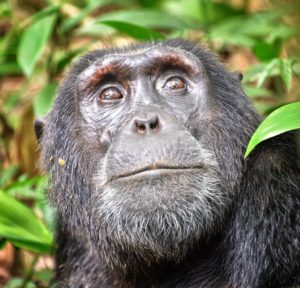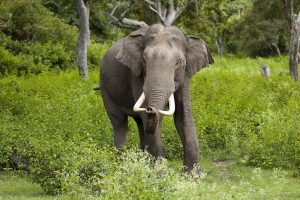Improved Assessments of Asiatic Lions
An alternative method for monitoring Asiatic lions using whisker patterns and body markings to identify individual lions has been demonstrated. This could lead to improved population estimates and help inform conservation policy.
 Image: By Sumit.pamnani at English Wikipedia [Public domain], via Wikimedia Commons
Image: By Sumit.pamnani at English Wikipedia [Public domain], via Wikimedia Commons An alternative method for monitoring endangered lions in India could improve estimates of their abundance and help inform conservation policy and management decisions. Keshab Gogoi and colleagues at the Wildlife Institute of India present their findings in the journal PLoS ONE.
Conservation practices have enabled Asiatic lions to recover from a population of only 50 individuals in the Gir Forests of Gujarat, India, to an estimated 500 individuals today. Accurate estimates of their abundance are needed so that conservation efforts to remain successful. However, existing monitoring methods, particularly a technique known as total counts, can miss some individuals while double-counting others, and they provide limited information on spatial density.
In the new study, Gogoi and colleagues demonstrate an alternative method for monitoring Asiatic lions. They used whisker patterns and permanent body marks to identify individual lions using a computer program and analysed that data with a mathematical modelling method known as spatially explicit capture recapture in order to estimate lion density. They also assessed prey density and other factors that could influence lion density.
The researchers identified 67 individual lions out of 368 lion sightings within a study site of 725 square kilometres in the Gir Forests, estimating an overall density of 8.53 lions per 100 square kilometres.
They were surprised to find that prey density did not appear to influence variations in lion density within the study site. Instead, lion density was higher in flat valley habitats (as opposed to rugged or elevated areas) and near sites where food had been placed to attract lions for tourists to view them.
The findings suggest that baiting lions for tourism greatly perturbs their natural density patterns, in line with other research demonstrating that baiting disrupts lion behaviour and social dynamics. The authors recommend that their alternative monitoring method be used to assess lions across their range (in India and Africa) to inform ongoing conservation efforts more accurately.
The Asiatic lion currently exists as a single sub-population and is therefore incredibly vulnerable to extinction from unpredictable events, such as an epidemic or large forest fire. There are indications of poaching incidents in recent years, and some reports that organised gangs have switched attention from tigers to these lions. There have also been a number of drowning incidents after lions fell into wells, and as a third of the Asiatic lion population resides outside protected areas, conflict with local residents exists.
The authors add: “The only population of Asiatic lions in the world survives in the Saurashtra landscape. Conserving this sub-species with the use of best science and management is a global priority and responsibility. Our research paper addresses this priority by developing a robust approach to their population assessment and monitoring which can be used for all lion populations across the world.”





Sorry, comments are closed on this post